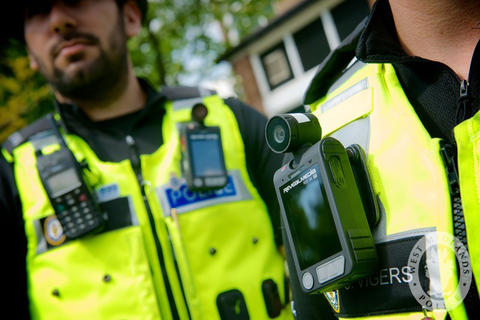In a press release issued today, the Department of Commerce announced the release of the Public Safety Analytics R&D Roadmap, developed by the Communications Technology Laboratory's Public Safety Communications Research division.
The development of data standards for wearable sensors for first responders is just one of many opportunities for transforming data to improve public safety, according to the new report.

The roadmap will guide planning for public safety communications research, including how to allocate the $300 million NIST is to receive from the recent AWS-3 spectrum auction. The roadmap is also intended to inform other government, industry and academic research.
This is the second roadmap developed in NIST's effort to identify research needed to support advances in public safety communications systems, such as two-way radio (known as land mobile radio or LMR) networks, to include a nationwide broadband network based on standards for wireless communications (called Long-Term Evolution, or 4G LTE). NIST published a Location-Based Services roadmap last year.
The new analytics roadmap suggests how data collection, processing, analysis, and visualization techniques could generate valuable intelligence for public safety in the short term (0 to 5 years), medium term (5 to 10 years) and long term (10 to 20+ years). The roadmap identifies trends and drivers, technology capabilities and gaps, enabling actions and actors and potential operational benefits such as improved situational awareness.
Trends affecting the future of public safety include shrinking government budgets, regionalization of emergency response, growing demands for ubiquitous data, richer software features and device capabilities, and the public's changing role through social media, mobile apps, citizen reporting, and scrutiny of data use. The report also stresses the need to address security and privacy issues.
Analytics will be used to manage large amounts of previously inaccessible data, to help the public safety community plan for, respond to, and recover from natural disasters, disease outbreaks, and terrorist attacks. But there is a need to standardize data for use by public safety agencies. For example, the Internet of Things is creating huge data streams but the public safety community is struggling to gain access to and use it.
The rise of smart cities, smart buildings, and smart utilities will drive the growth of "big data" from which the public safety community will need to derive meaning and value. Responder-worn devices will also generate big data from sensors to capture biometric and weather data, perhaps test air quality and levels of carbon monoxide and propane during fire rescue, and incorporate tools such as geolocation positioning chips.
The growing potential for cyberattacks combined with physical attacks will demand real-time situational awareness. Response will require coordinated analytics of both the cyber and physical worlds. Data will need to be re-routed over a backup path if the primary path is attacked or down.
The roadmap identifies a number of technology gaps such as:
Software: The public safety community lacks software that can aggregate, filter, transform, and process unstructured data and lacks sufficient bandwidth to download and upload data streams from the Internet of Things and sensors. Public safety also relies on proprietary rather than open-source software and has limited access to non-public safety camera feeds and other data. Threat detection systems need to become more sophisticated.
Devices: Today's sensors are costly and limited in processing power and the ability to match images. Charging and battery technologies need to be more efficient. Data standards are needed for on-body sensor readings.
Network: Resilience in the face of attacks will depend on networks' ability to self-diagnose, self-configure in real time without human intervention, and self-heal/restore. They will also need to analyze traffic patterns to discover potential attacks.
The roadmap identifies a number of recommended R&D opportunities such as:
Software: Create a public safety information sharing and analysis center similar to www.data.gov; define Internet of Things data standards and processing models for public safety; and partner with social media analytics companies to design tools to analyze physical attributes and biometrics in images;
Devices: Define requirements for on-device recording and storing of communications transcripts; develop an analytics framework for integrating disparate data sources across public safety devices and sensors; define data standards and exchange protocols for responder-worn sensors; and
Networks: Develop resiliency and prioritization services to analyze mission-critical data when the network goes down or is overloaded; develop a network-based element to discover and deliver critical content; and create a standard and/or usage scenario that indicates what information or analytical capabilities are needed during specific situations such as fires, floods, and vehicle crashes.
Report: R. Felts, M. Leh and T. McElvaney. 2016. Public Safety Analytics R&D Roadmap. NIST Technical Note 1917. Posted online April 19. http://dx.doi.org/10.6028/NIST.TN.1917.

